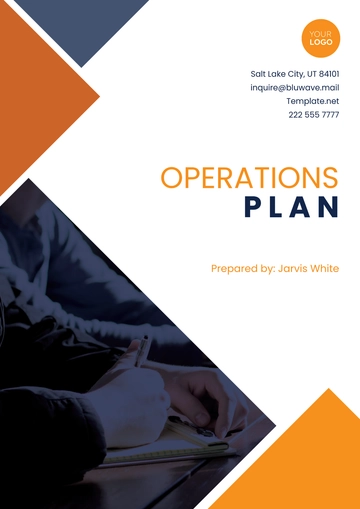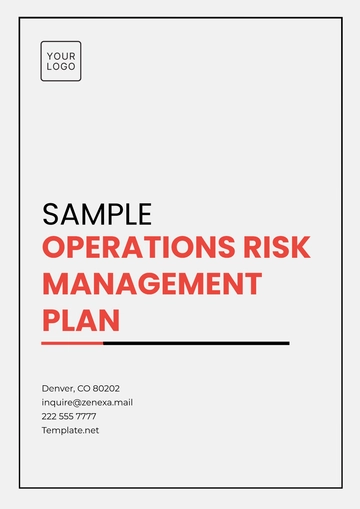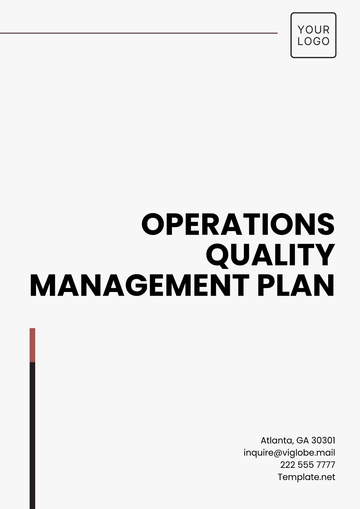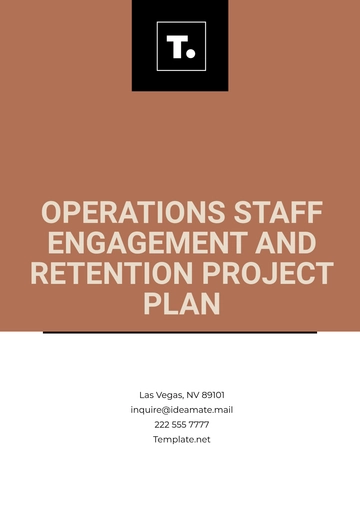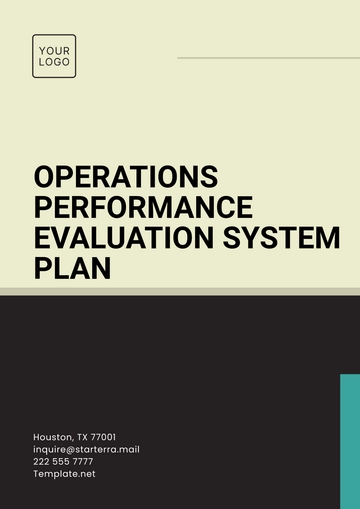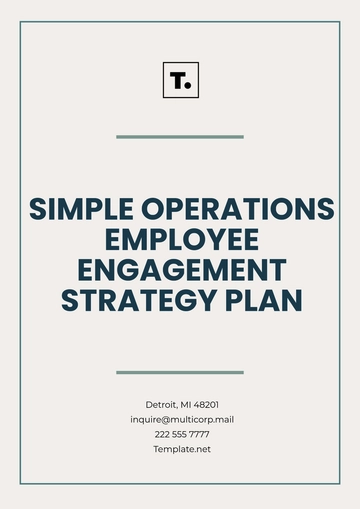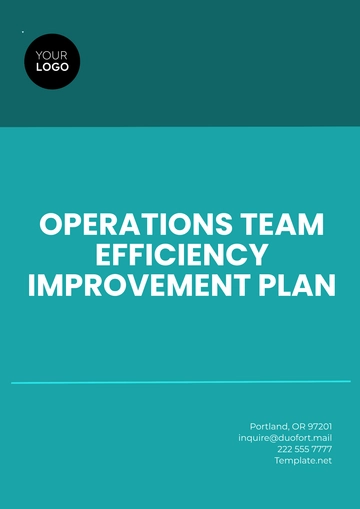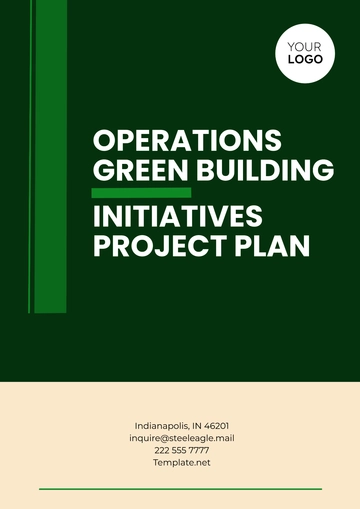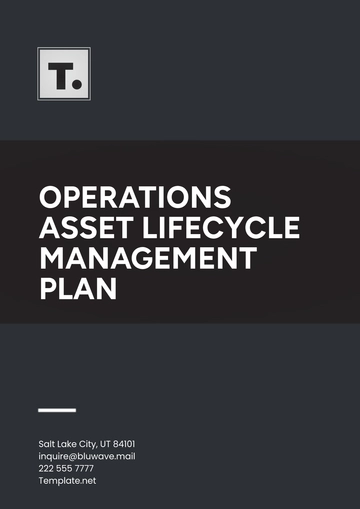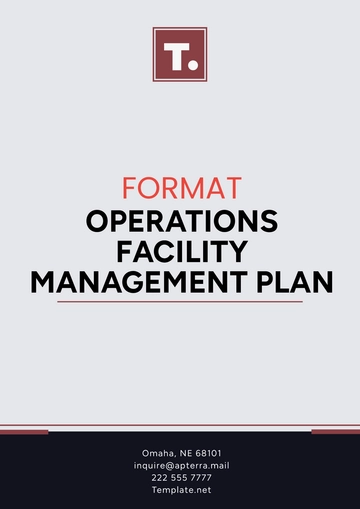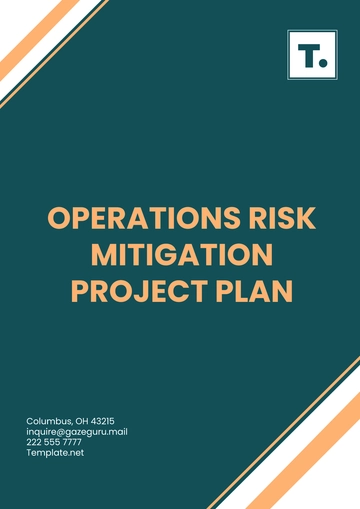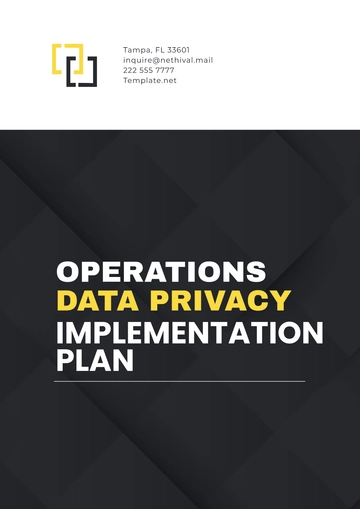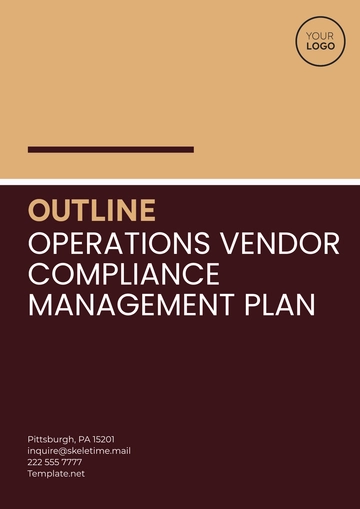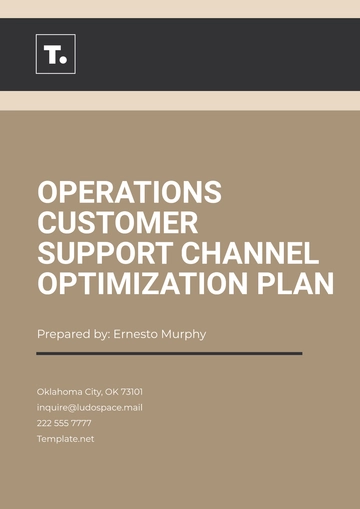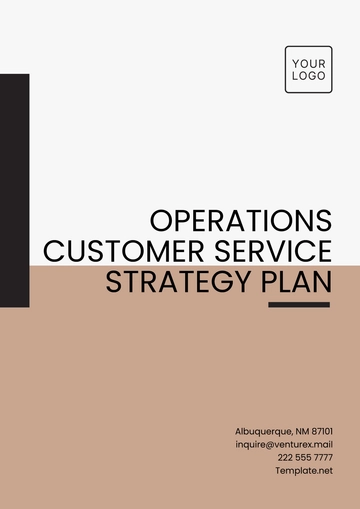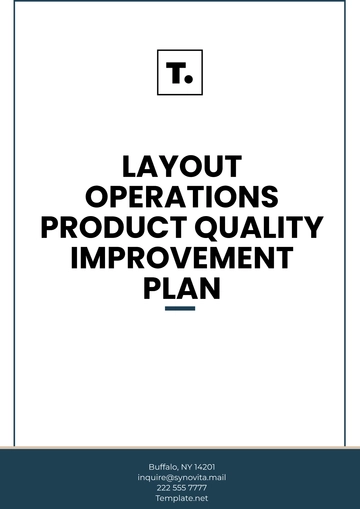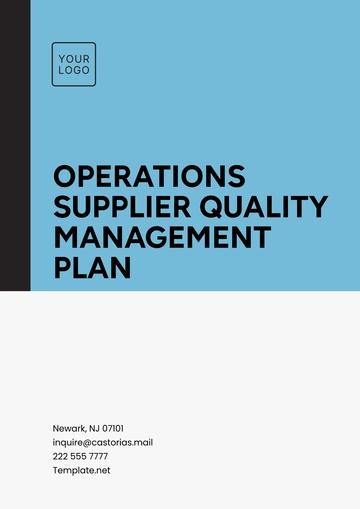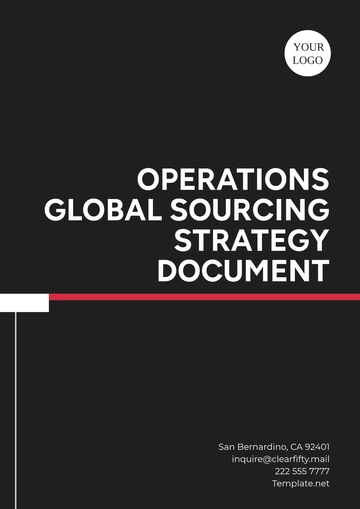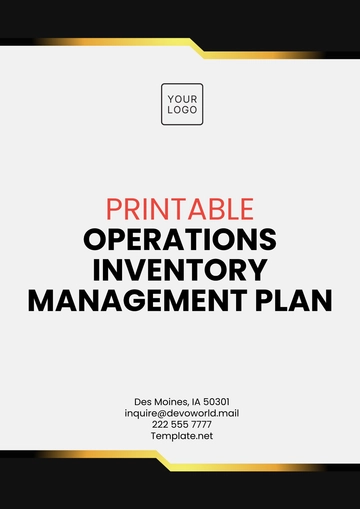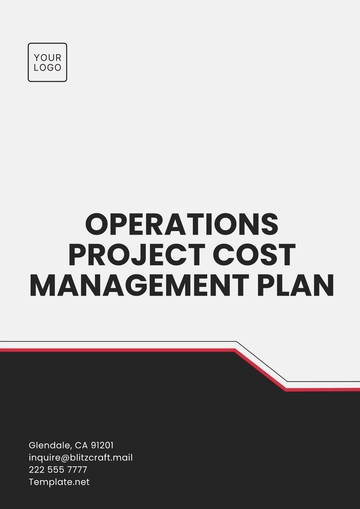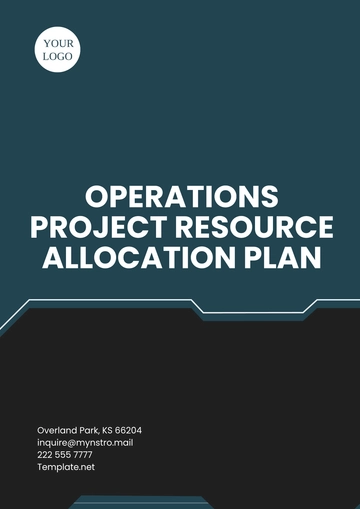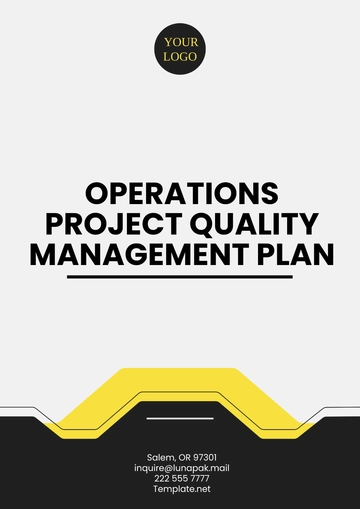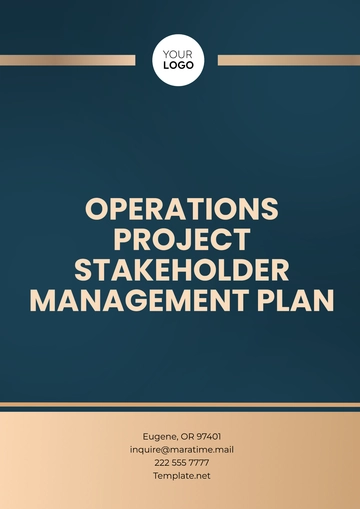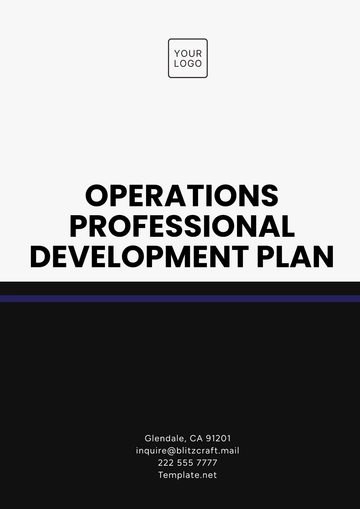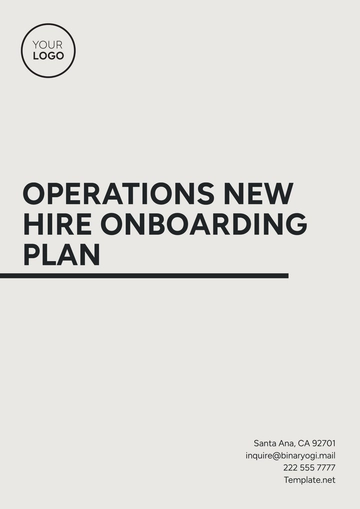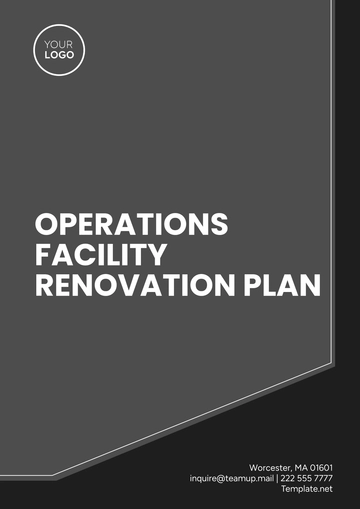Free Organization Operational Plan
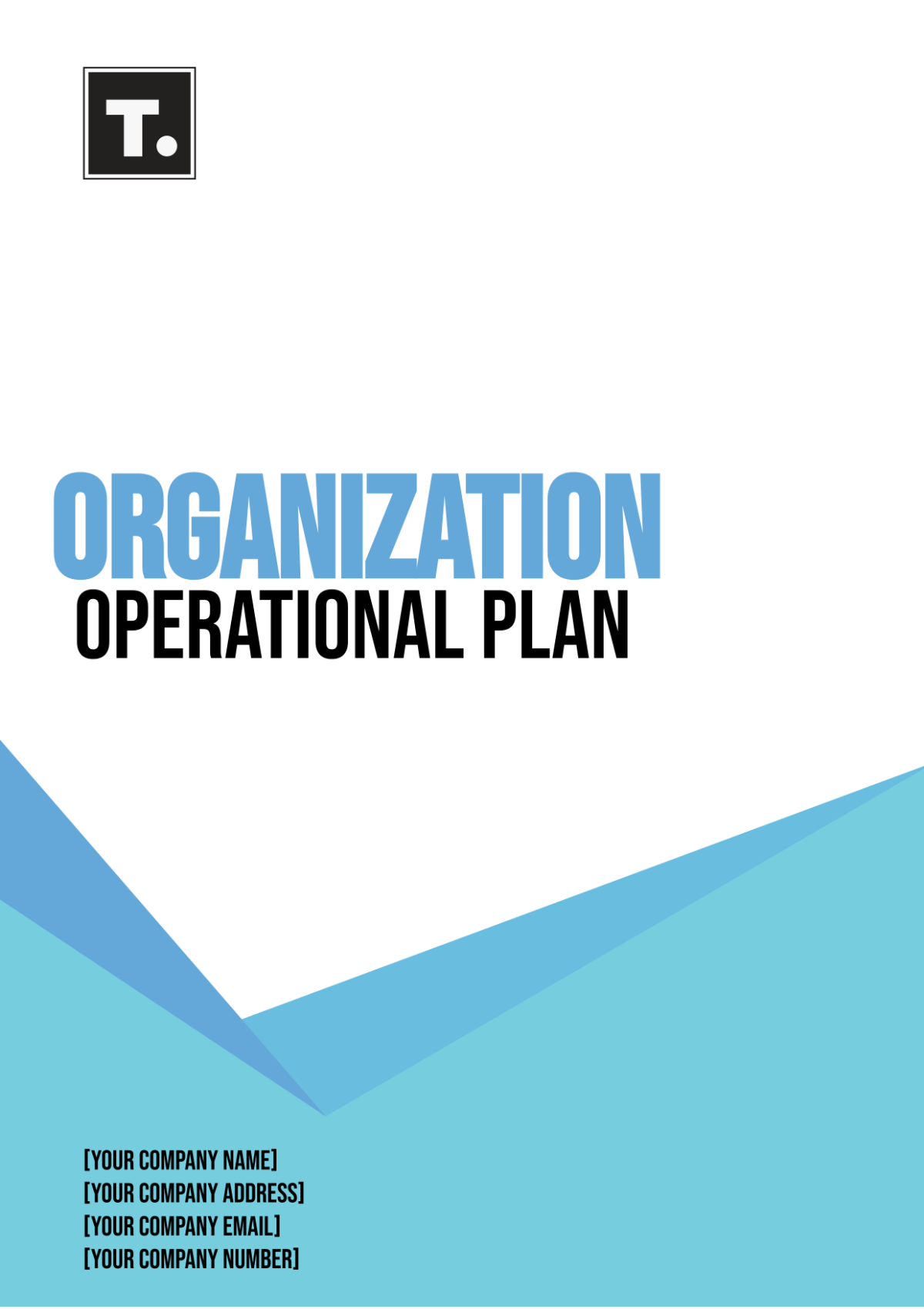
Prepared by: | [Your Name] |
Company: | [Your Company Name] |
Date: | [DATE] |
I. Executive Summary
In the Executive Summary, we outline our comprehensive operational strategy aimed at driving [Your Company Name] toward its mission of revolutionizing the digital landscape. Our key objectives encompass the development of innovative products, expansion of market reach, and enhancement of customer satisfaction. To achieve these goals, we prioritize investments in research and development, forge strategic partnerships, and implement agile project management methodologies.
II. Organizational Overview
A. Mission Statement
The mission of [Your Company Name] is to revolutionize the digital landscape by providing innovative technological solutions that empower businesses and individuals alike to thrive in the digital era.
B. Vision Statement
The vision of [Your Company Name] is to be a global leader in technology, driving positive change and shaping the future of industries through cutting-edge innovations.
C. Goals and Objectives
Goal 1: Develop and launch three new products by the end of 2050, targeting emerging markets and addressing pressing industry needs.
Goal 2: Expand market reach by 50% within the next five years through strategic partnerships, targeted marketing campaigns, and enhanced distribution channels.
Goal 3: Enhance customer satisfaction to achieve a Net Promoter Score (NPS) of 90% by 2055 by delivering exceptional products and unparalleled customer support.
III. Operational Strategies
A. Key Strategies
Strategy 1: Invest $10 million annually in research and development to stay ahead of technological trends and drive product innovation.
Strategy 2: Forge strategic partnerships with industry leaders to leverage expertise, expand market presence, and access new customer segments.
Strategy 3: Implement agile project management methodologies to enhance cross-functional collaboration, improve project delivery timelines, and adapt quickly to changing market demands.
B. Key Processes
Process 1: Streamline product development processes by adopting lean principles, conducting rapid prototyping, and soliciting early feedback from stakeholders to accelerate time-to-market.
Process 2: Enhance customer relationship management systems to personalize user experiences, anticipate customer needs, and foster long-term loyalty and advocacy.
Process 3: Optimize supply chain management by implementing demand forecasting tools, establishing strategic partnerships with suppliers, and implementing just-in-time inventory management practices to minimize costs and maximize efficiency.
IV. Resource Allocation
A. Financial Resources
Budget Allocation: Allocate $10 million annually for research and development initiatives, $5 million for marketing and sales activities, and $3 million for operational expenses.
Funding Sources: Generate revenue through product sales, subscription models, and strategic investments.
Category | Allocation (USD) |
|---|---|
Research and Development | $10,000,000 |
Marketing and Sales | $5,000,000 |
Operational Expenses | $3,000,000 |
Total | $18,000,000 |
B. Human Resources
Staffing Plan: Hire additional software engineers, UX/UI designers, and marketing specialists to support expansion efforts. Develop a talent pipeline through internships, apprenticeships, and partnerships with educational institutions.
Training and Development: Implement continuous training programs to upskill employees, foster a culture of learning and innovation, and empower employees to take ownership of their professional development.
Position | Number of Employees |
|---|---|
Software Engineers | 50 |
UX/UI Designers | 20 |
Marketing Specialists | 15 |
Total | 85 |
V. Implementation Plan
A. Timeline
Short-term Goals: Achieve product development milestones quarterly, with the first product launch scheduled for Q3 2050.
Long-term Goals: Scale operations and achieve global market penetration by 2050, with plans for international expansion and diversification into new product categories.
B. Action Steps
Step 1: Conduct comprehensive market research to identify emerging trends, customer pain points, and competitive landscapes.
Step 2: Develop prototypes and conduct beta testing with target users to gather feedback, iterate on product designs, and validate market demand.
Step 3: Launch integrated marketing campaigns across digital and traditional channels to drive product adoption, raise brand awareness, and generate leads.
VI. Monitoring and Evaluation
A. Key Performance Indicators (KPIs)
KPI 1: Measure monthly revenue growth to track financial performance and ensure alignment with budget projections.
KPI 2: Monitor customer satisfaction through quarterly NPS surveys and customer feedback mechanisms to identify areas for improvement and drive service excellence.
KPI 3: Evaluate product adoption rates, user engagement metrics, and customer lifetime value to gauge market acceptance and inform product development priorities.
B. Evaluation Methods
Regular Assessments: Conduct quarterly performance reviews to assess progress against strategic objectives, identify emerging risks, and reallocate resources as needed to mitigate potential disruptions.
Feedback Mechanisms: Implement customer feedback loops through online surveys, focus groups, and customer advisory boards to gather insights, validate assumptions, and prioritize product enhancements.
VII. Continuous Improvement
A. Lessons Learned
Successes: Celebrate successful product launches, customer wins, and employee achievements to foster a culture of recognition, collaboration, and continuous improvement.
Challenges: Address challenges proactively, encourage open dialogue, and leverage failures as learning opportunities to drive innovation and resilience.
B. Adjustments and Adaptations
Strategic Revisions: Iterate product offerings based on market feedback, technological advancements, and competitive pressures to maintain relevance and sustain competitive advantage.
Innovation Initiatives: Foster a culture of innovation by investing in employee training and development, establishing cross-functional innovation teams, and incentivizing idea generation and experimentation.
VIII. Communication Plan
A. Internal Communication
Channels: Utilize Slack channels, team meetings, and quarterly town halls for internal communication to ensure transparency, alignment, and employee engagement.
Frequency: Provide weekly updates, monthly performance reports, and quarterly business reviews to keep employees informed, motivated, and accountable.
B. External Communication
Stakeholder Engagement: Engage with customers, partners, and investors through regular updates, newsletters, and events to build trust, foster loyalty, and solicit feedback.
Public Relations: Manage press releases, media inquiries, and social media presence to enhance brand visibility, reputation, and thought leadership in the industry.
IX. Conclusion
In conclusion, this operational plan outlines a strategic roadmap for [Your Company Name] to achieve its mission of revolutionizing the digital landscape. By focusing on innovation, market expansion, and customer satisfaction, we are poised to drive sustainable growth and maintain our position as a global technology leader. With diligent execution of our strategies and continuous monitoring and adaptation, we are confident in our ability to realize our vision and deliver exceptional value to our stakeholders in the years ahead.
- 100% Customizable, free editor
- Access 1 Million+ Templates, photo’s & graphics
- Download or share as a template
- Click and replace photos, graphics, text, backgrounds
- Resize, crop, AI write & more
- Access advanced editor
Streamline your organization's strategies with the Organization Operational Plan Template from Template.net. This editable and customizable tool provides a comprehensive framework for effective planning. Tailor it to your specific needs using our Ai Editor Tool, ensuring flexibility and precision. Elevate your organization's efficiency and success with this professionally designed template, crafted to meet diverse operational requirements.
You may also like
- Finance Plan
- Construction Plan
- Sales Plan
- Development Plan
- Career Plan
- Budget Plan
- HR Plan
- Education Plan
- Transition Plan
- Work Plan
- Training Plan
- Communication Plan
- Operation Plan
- Health And Safety Plan
- Strategy Plan
- Professional Development Plan
- Advertising Plan
- Risk Management Plan
- Restaurant Plan
- School Plan
- Nursing Home Patient Care Plan
- Nursing Care Plan
- Plan Event
- Startup Plan
- Social Media Plan
- Staffing Plan
- Annual Plan
- Content Plan
- Payment Plan
- Implementation Plan
- Hotel Plan
- Workout Plan
- Accounting Plan
- Campaign Plan
- Essay Plan
- 30 60 90 Day Plan
- Research Plan
- Recruitment Plan
- 90 Day Plan
- Quarterly Plan
- Emergency Plan
- 5 Year Plan
- Gym Plan
- Personal Plan
- IT and Software Plan
- Treatment Plan
- Real Estate Plan
- Law Firm Plan
- Healthcare Plan
- Improvement Plan
- Media Plan
- 5 Year Business Plan
- Learning Plan
- Marketing Campaign Plan
- Travel Agency Plan
- Cleaning Services Plan
- Interior Design Plan
- Performance Plan
- PR Plan
- Birth Plan
- Life Plan
- SEO Plan
- Disaster Recovery Plan
- Continuity Plan
- Launch Plan
- Legal Plan
- Behavior Plan
- Performance Improvement Plan
- Salon Plan
- Security Plan
- Security Management Plan
- Employee Development Plan
- Quality Plan
- Service Improvement Plan
- Growth Plan
- Incident Response Plan
- Basketball Plan
- Emergency Action Plan
- Product Launch Plan
- Spa Plan
- Employee Training Plan
- Data Analysis Plan
- Employee Action Plan
- Territory Plan
- Audit Plan
- Classroom Plan
- Activity Plan
- Parenting Plan
- Care Plan
- Project Execution Plan
- Exercise Plan
- Internship Plan
- Software Development Plan
- Continuous Improvement Plan
- Leave Plan
- 90 Day Sales Plan
- Advertising Agency Plan
- Employee Transition Plan
- Smart Action Plan
- Workplace Safety Plan
- Behavior Change Plan
- Contingency Plan
- Continuity of Operations Plan
- Health Plan
- Quality Control Plan
- Self Plan
- Sports Development Plan
- Change Management Plan
- Ecommerce Plan
- Personal Financial Plan
- Process Improvement Plan
- 30-60-90 Day Sales Plan
- Crisis Management Plan
- Engagement Plan
- Execution Plan
- Pandemic Plan
- Quality Assurance Plan
- Service Continuity Plan
- Agile Project Plan
- Fundraising Plan
- Job Transition Plan
- Asset Maintenance Plan
- Maintenance Plan
- Software Test Plan
- Staff Training and Development Plan
- 3 Year Plan
- Brand Activation Plan
- Release Plan
- Resource Plan
- Risk Mitigation Plan
- Teacher Plan
- 30 60 90 Day Plan for New Manager
- Food Safety Plan
- Food Truck Plan
- Hiring Plan
- Quality Management Plan
- Wellness Plan
- Behavior Intervention Plan
- Bonus Plan
- Investment Plan
- Maternity Leave Plan
- Pandemic Response Plan
- Succession Planning
- Coaching Plan
- Configuration Management Plan
- Remote Work Plan
- Self Care Plan
- Teaching Plan
- 100-Day Plan
- HACCP Plan
- Student Plan
- Sustainability Plan
- 30 60 90 Day Plan for Interview
- Access Plan
- Site Specific Safety Plan
